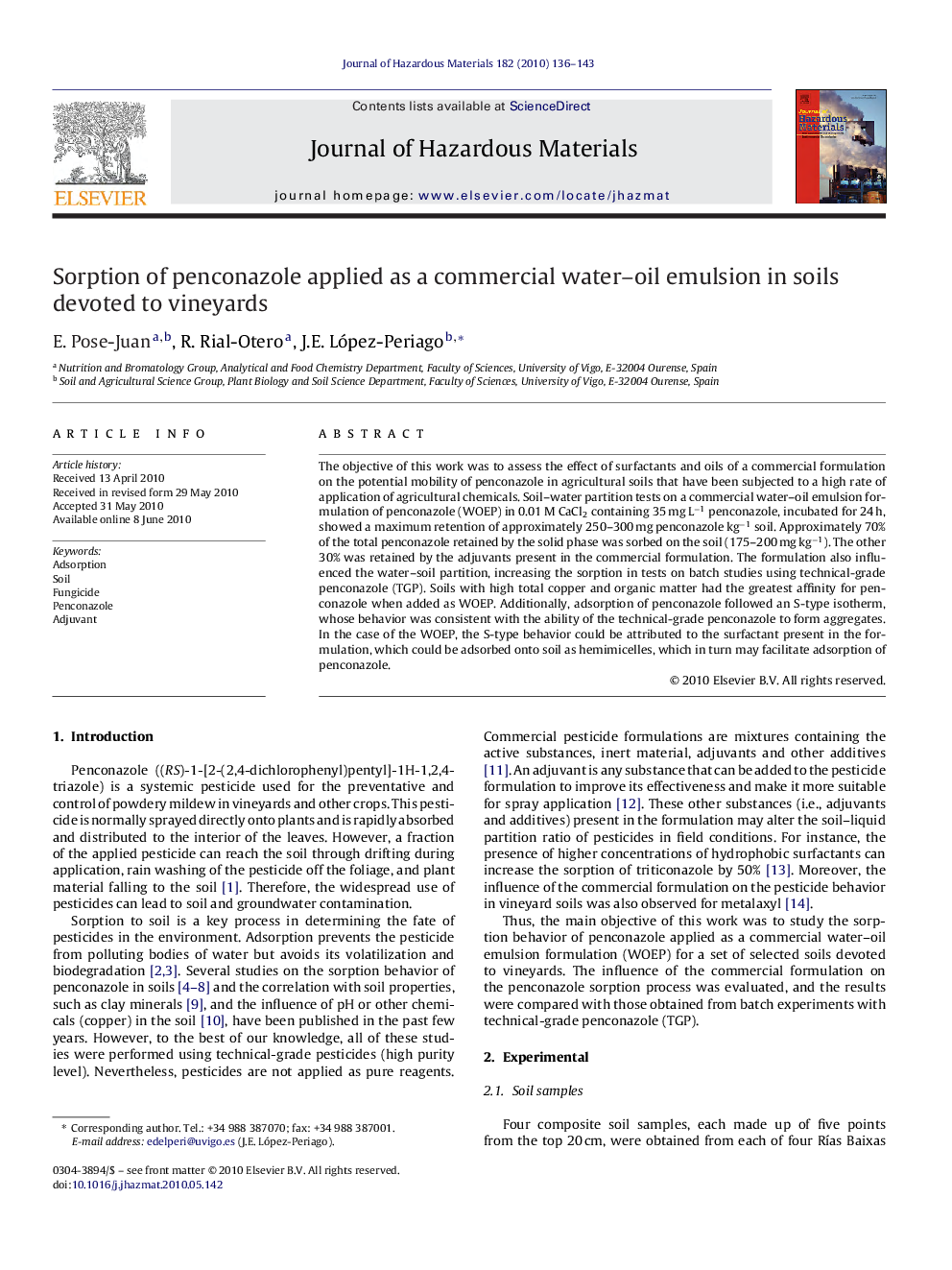| Article ID | Journal | Published Year | Pages | File Type |
|---|---|---|---|---|
| 579670 | Journal of Hazardous Materials | 2010 | 8 Pages |
Abstract
The objective of this work was to assess the effect of surfactants and oils of a commercial formulation on the potential mobility of penconazole in agricultural soils that have been subjected to a high rate of application of agricultural chemicals. Soil-water partition tests on a commercial water-oil emulsion formulation of penconazole (WOEP) in 0.01 M CaCl2 containing 35 mg Lâ1 penconazole, incubated for 24 h, showed a maximum retention of approximately 250-300 mg penconazole kgâ1 soil. Approximately 70% of the total penconazole retained by the solid phase was sorbed on the soil (175-200 mg kgâ1). The other 30% was retained by the adjuvants present in the commercial formulation. The formulation also influenced the water-soil partition, increasing the sorption in tests on batch studies using technical-grade penconazole (TGP). Soils with high total copper and organic matter had the greatest affinity for penconazole when added as WOEP. Additionally, adsorption of penconazole followed an S-type isotherm, whose behavior was consistent with the ability of the technical-grade penconazole to form aggregates. In the case of the WOEP, the S-type behavior could be attributed to the surfactant present in the formulation, which could be adsorbed onto soil as hemimicelles, which in turn may facilitate adsorption of penconazole.
Related Topics
Physical Sciences and Engineering
Chemical Engineering
Chemical Health and Safety
Authors
E. Pose-Juan, R. Rial-Otero, J.E. López-Periago,
